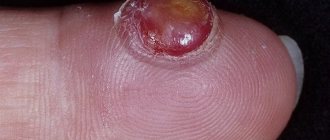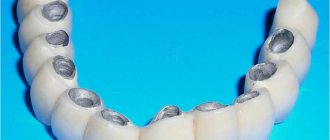In this article you will find out whether snails have teeth and how many of them there are in different species, what these creatures eat, what are their unique features and how they differ from other earthly creatures. We are, of course, not Wikipedia, but we will give detailed answers to the most interesting questions. Many interesting discoveries await you. Let's get started.
Land snail. Photo by: katiedee47
Spoiler: a snail has a lot in common with a shark, a chicken, a snake, an ant, and even a bulletproof vest. And it's not just about the teeth.
Snails (gastropods) are unique creatures with unusual anatomy and physiology. This is one of the most ancient species on Earth, which appeared about 500-600 million years ago. There are more than 100,000 species in the world; in Russia there are about 1,600 species. Gastropods, despite their harmless appearance, can also be predators. And although snail teeth can only be seen under a microscope, they are there. And if mollusks have only one leg, the number of teeth they have can be in the tens of thousands.
Do snails have teeth?
Mollusks have teeth, but they can only be called such only conditionally. This is due to their unusual location. In addition, these are not actually teeth, but radulas. The radula is a chitinous membrane containing up to 1000 chitinous projections. Their function is to scrape food. The number of teeth depends on the type of mollusk. You can see photographs of the mouth under a microscope.
Snail teeth under a microscope
Warning. Many predators first secrete a caustic liquid. Only after this do they start eating.
Location Features
The snail is a member of the snail class. There are 100,000 known snails. Almost 1650 species are mollusks and snails. When observing, you can see how quickly solid foods, vegetables, and plant leaves disintegrate. This indicates the presence of a masticatory system. She is well developed.
During observation, you can notice how quickly they get rid of solid food
The chitinous plate, the radula, is involved in chewing solid food. The radula is located in the oral cavity and resembles a tongue in appearance. Snails may also have such organs. However, the location is different.
Predatory mollusks are found in nature. When chewed, they release a caustic liquid. This makes swallowing easier. The peculiarity of the radula is that it is regularly updated. Snail teeth, especially the front teeth, wear out quickly. Deep inside the iris there is a constant process of new growth taking place. Up to five new rows appear every day. They replace worn ones.
Note: Scientists were able to examine the teeth and their structure under a microscope.
How many teeth does a snail have in its mouth?
Gastropods seem quite peaceful. However, if you count how many teeth a snail has, you will find that there are more than those of predators. The snail has the largest number of teeth. They are in second place after snails. They have more than 30,000 teeth.
The snail is the leader among the critters.
The mollusks even outperformed the sharks. Their mouths contain between 5,000 and 15,000 sharp “fangs”. Many of them boast a number of teeth of up to 25,000. The total number of teeth reaches 14,000, which is enough for the mollusk to consume solid food. If we consider the “toothless”, then it is worth mentioning the African specimen. This snail has 10,000 teeth. However, this does not prevent him from gnawing the stems of tropical plants and gnawing grass.
Strength of teeth
How durable the dental apparatus is can be judged by the type of food consumed. In carnivorous species, the teeth are not only stronger, but also denser, which cannot be said about herbivorous mollusks. They can eat insects.
For example, oysters use a radula instead of a drill. With its help, they can open the shells of other animals. They suck out the contents of the shell through the resulting hole. The work of a drill can be compared to the work of an earthmoving machine. The difference is that a car has one bucket, while a clam has hundreds.
For example, an oyster uses a radula instead of a drill
The mollusk uses its teeth to scrape off the top layer from the plant and then digests it. Despite their small size, snails can be a real disaster for gardeners. They are especially dangerous for onions and cabbage.
The clam scrapes the outer layer of the plant with its claws.
Even freshly hatched snails have teeth. This has been proven by numerous studies. The snail's mouth is no different from the mouth of an adult. After birth, they feed at the same level.
Carefully. A grass-eating snail does not need such powerful teeth. Its sharp bristles, capable of scraping off vegetation, are quite enough.
How do snail teeth work?
The difference between their teeth is their mobility. The mollusk scrapes off food with movements of its mouth. The food is then pushed into the mouth. Food moves slowly but surely down the esophagus.
The mollusk scrapes off food with movements of its mouth.
The tongue, which has a chitinous shell, breaks down food. This leads to rapid wear of small teeth. However, this is not a problem for snails. Teeth are restored quite quickly - new teeth grow. Snails with such regeneration can be compared to sharks.
About life expectancy
Despite the fact that snails have very good stress resistance, they live a maximum of only 25 years. Being in nature, mollusks run the risk of being killed, which means that their life expectancy in such conditions is noticeably reduced.
For example, a grape snail can live safely for up to twenty years. As for living in the wild, its life expectancy is usually only eight years.
By breeding snails in captivity, you can expect them to live a really long life. Naturally, you should not neglect the simple rules of care and feeding.
What does a snail's mouth look like under a microscope?
It's hard to believe that such a small mollusk has so many teeth. Their number reaches 25 thousand. It is even more difficult to imagine where they fit and what size they are.
Teeth may be thin, flat, crooked or crooked.
The teeth are not visible to the naked eye. For this you need a microscope. Just look at a photo of your teeth. As a rule, what you see can hardly be called a tooth. Outwardly, it resembles a rough tongue. From a scientific point of view, these are teeth.
Mollusks are unique animals
During the study, interesting facts were discovered:
- the shape is very different. Teeth can be thin, flat, or curved;
- evenly spaced in rows. The number of teeth in a row depends on the species;
- Over time, teeth wear down. Over time, teeth wear down and new ones are inserted in their place. This happens all the time.
This subspecies does not bite food, but scrapes it off. For this reason, teeth are compared to a grater.
Quantity
So how many teeth does a snail have, you ask? Of course, everything directly depends on the type of mollusk, but the number goes into the thousands. Snails do not have teeth as such; their scientific name is radula or grater. The radula contains a chitinous basal plate and chitinous teeth arranged in rows. In some mollusks, the radula has the shape of a drill, thanks to which the snail is able to easily drill through the shell of its victim and get to the desired food.
One of the record holders for the number of teeth is the American garden snail, which has 135 rows, each of which contains 105 teeth, and any of them, if damaged, is restored independently! If only it were like this for us people! It is quite easy to calculate the total number of teeth in a garden snail, which will be equal to 14,175.
Interesting Facts
Mussels are unique animals. Many people are interested not only in how many teeth a snail has, but also in educational facts.
This subspecies of animals does not bite off food, but scrapes it off
Interesting facts include:
- The nervous system consists of 20,000 neurons. There are several hundred billion of them in the human body. Gastropods are very sensitive. That's why they have so many fans.
- The horns serve as the nose. They have olfactory receptors. With their help, mollusks search for food.
- Their vision is rather poorly developed. Therefore, they can only distinguish between light and darkness.
- All species are hermaphrodites.
- Many varieties, no matter how many teeth they have, are considered delicacies. For example, the meat of Achatina fulica, which has reached a size of 20 cm, is rich in useful substances. It also contains calcium, fatty acids, iron and proteins.
- The maximum speed is 7 cm in 60 seconds. In ordinary life, mollusks cover no more than 3.5 cm in a minute.
- The largest individual weighed 16 kg and had a length of 70 cm.
- The shells are twisted clockwise. They also occur in the opposite direction, but very rarely.
- In traditional medicine, shellfish were used to treat diseases of the digestive tract and eye diseases. They were also used to stop bleeding.
You can see a picture of what a mollusk's dental apparatus looks like. Many species may look cute, but they are predators.
Snails
Representatives of the Achatina family are terrestrial pulmonary gastropods. Their shell is impressive in size and strength. Moreover, in individuals living in a southern climate, it is white in color - to reflect the sun's rays and is thicker. For those living in humid areas, it is thin and even transparent.
The skin of the Achatina body is wrinkled and folded. In addition to pulmonary respiration, they also have skin respiration. The contractile sole is developed. It is equipped with glands that secrete mucus for ease of movement.
The tentacles on the head perform the same function as in grape snails - eyes and sense of smell.
Nutrition
A varied diet depends on the location of the gastropod. It can be:
- soft parts of plants or their remains;
- small relatives;
- worms, carrion;
- fish and crustaceans;
- insects.
We are happy to pamper ourselves with berries, fruits and vegetables. The younger generation prefers fresh food. The older ones switch to carrion, including rotten wood as a delicacy.
For those who decide to keep snails at home, the following are excellent food: industrially produced fish food, ground algae, chopped vegetables or aquarium plants.
Historical data
The habitat of Achatina is the equatorial part of East Africa. Not without human help they moved to Madagascar, Seychelles, India, and Sri Lanka. In Indochina, they spread throughout the entire territory in just 10 years.
Once in the United States, they managed to destroy most of Florida's farmland in a few months. Every effort was made to destroy them. Because of this, Achatina is prohibited from being brought into the United States and kept as pets. Violators of the ban face a five-year prison sentence and a huge fine.
India and Taiwan faced the same problems. Hindus destroy millions of snails every year. However, local residents of these countries began to eat them with pleasure, inventing various dishes. Achatina soup is popular in India as a healing remedy for lung diseases.
Dimensions
Achatina are considered the largest land snails.
Many people are interested in how big they can grow. Their eggs reach 5 mm in diameter. The hatched babies grow very quickly and are on average about 15 cm in length. In nature or in good conditions, very large specimens are found - up to 25 cm, while their shell can reach 30 cm. Table of snail growth by month:
| Month | Size |
| 1 month | 1 - 3 cm |
| 2 months | 2 - 7 cm |
| 3 months | 3 - 10 cm |
| 4 months | 4 - 10 cm |
| 5-12 months | 5 – 14 cm |
| 1 year | reach maximum growth and stop growing |
Reproduction
These amazing land animals have both sexual characteristics, which is an abundant sign of reproduction. Up to 85 babies can be born at one time. When laying eggs, the future parent waits 28 days for maturation. After which a new individual with a transparent shell is born.
But snails with gills cannot boast of such a function. They need a mollusk of the opposite sex to reproduce. After fertilization, the eggs are laid in a cocoon to protect future offspring. Over time, the babies turn from an egg into a larva that can move around and get food for itself.
There are species that go through the entire pregnancy, bearing offspring inside.
In the wild or at home, the snail lives the same long time. Her lifespan is limited to 25 years. On average, a gastropod will enjoy its stay on earth for 8 years.











